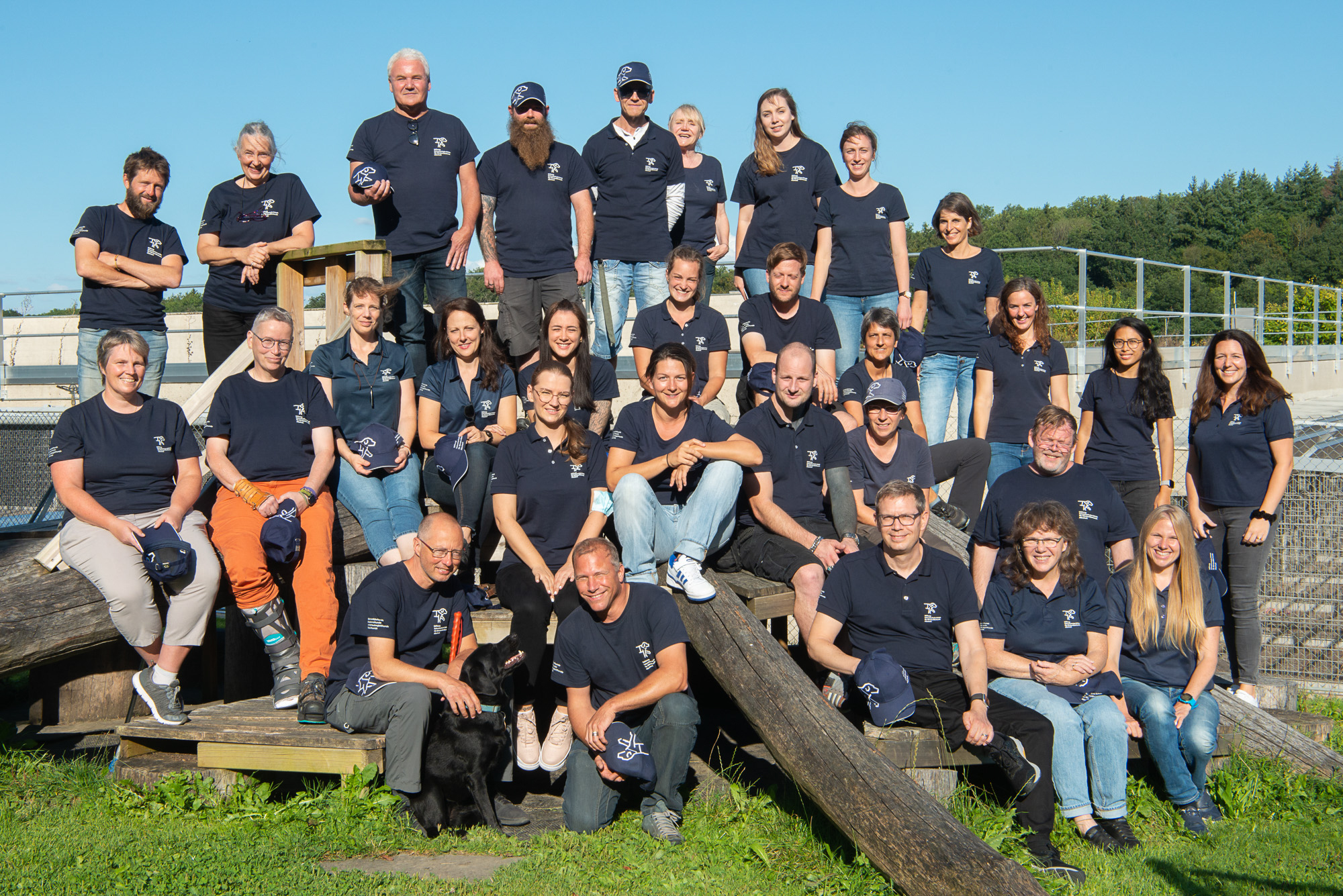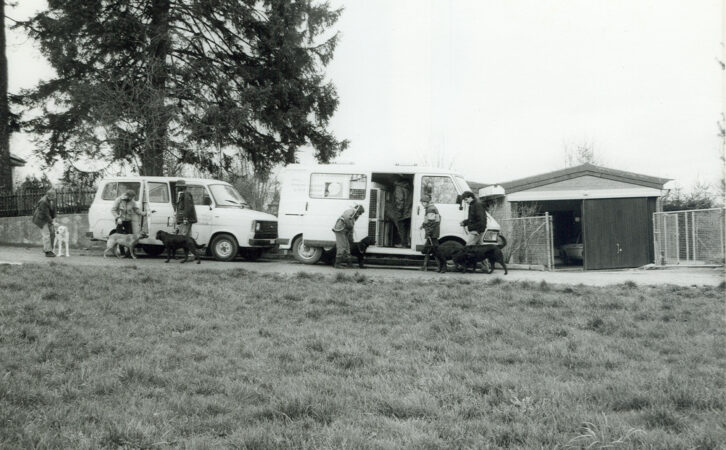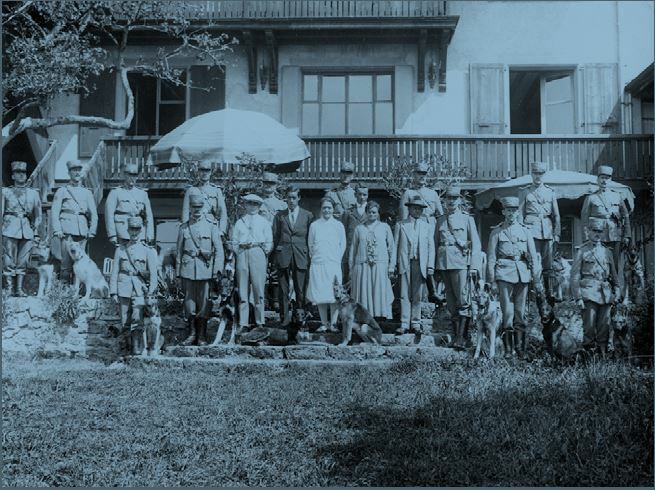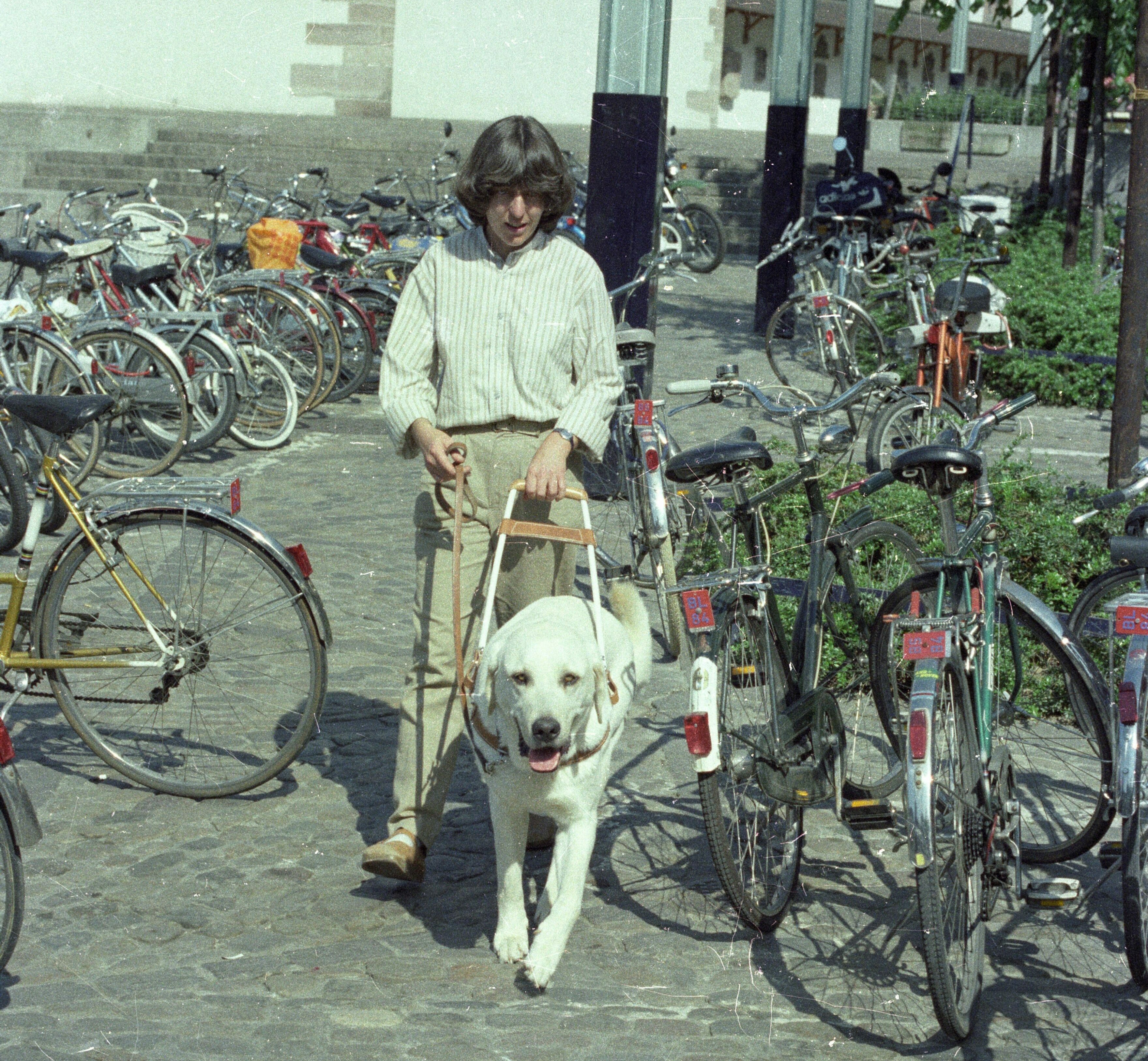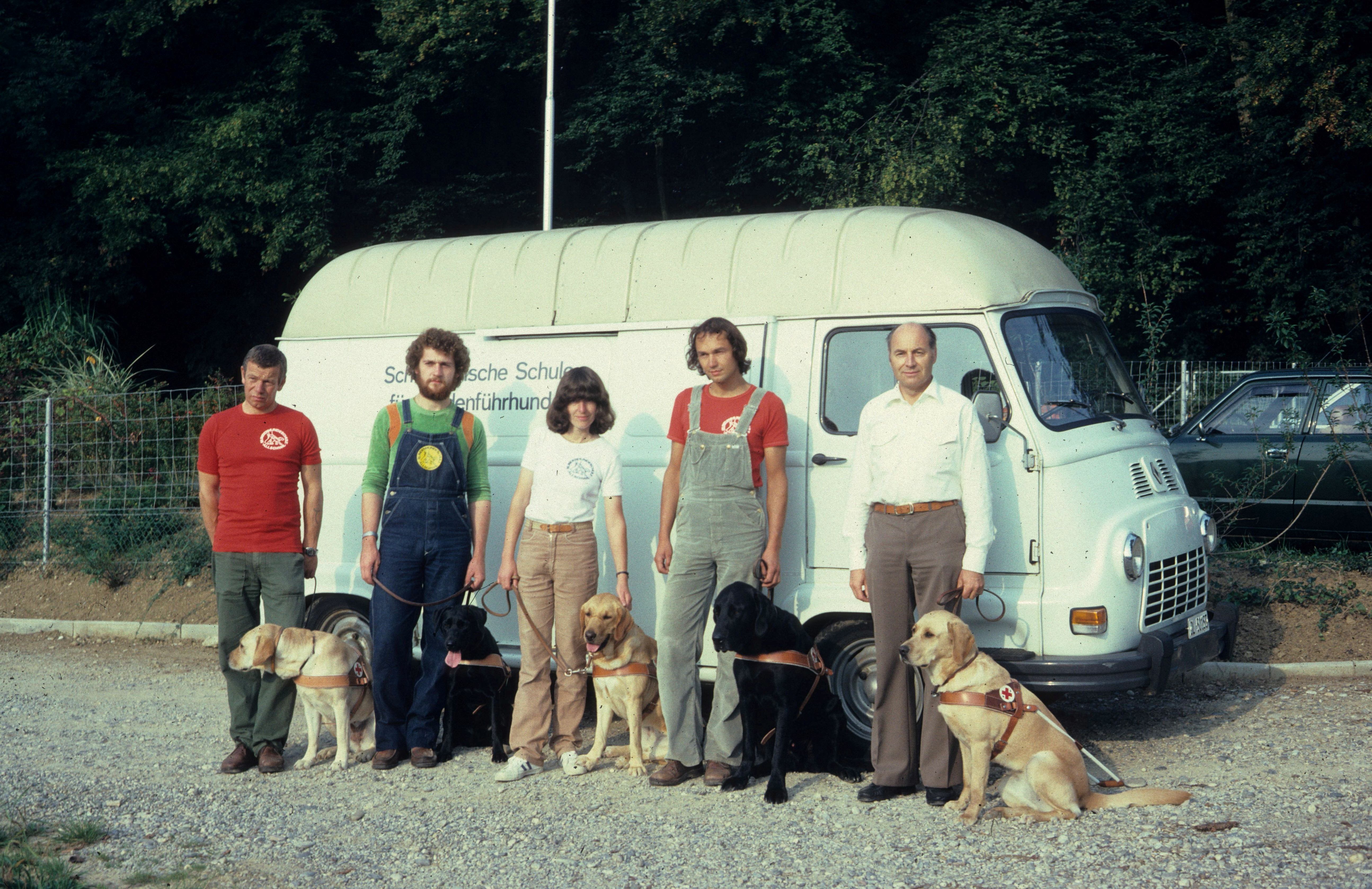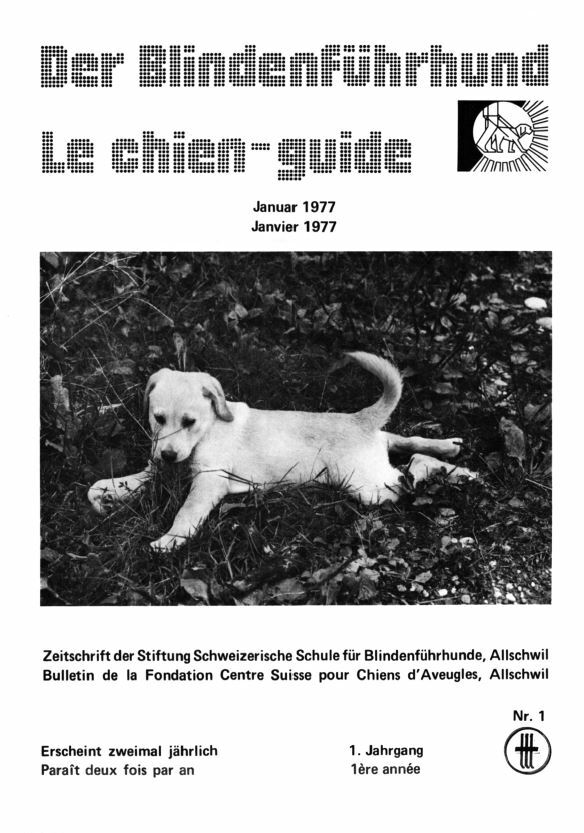-
Preparing the way
In 1928, an American called Dorothy Harrison Eustis sets up an institution called «Fortunate Fields», not far from Vevey in Switzerland, where guide dog trainers from many different nations come to be instructed. Buddy the sheepdog, probably America’s most famous guide dog, originally comes from Vevey and eventually becomes well-known in Europe too, through a book entitled «First Lady of the Seeing Eye», written by Morris Frank (who is himself blind). The Harrison Eustis couple closes the school in 1934 due to lack of interest and returns to the USA. Together with Morris Frank, Dorothy Harrison Eustis makes a crucial contribution to the establishment of «The Seeing Eye», America’s first guide dog school.
-
1934 to the early 1960s
After Dorothy Harrison Eustis closes her school, guide dogs are no longer trained in Switzerland to help blind people. Anyone who wants a guide dog has to obtain one from another country nearby, e.g., from Oftersheim in Germany – or they have to train one for themselves.
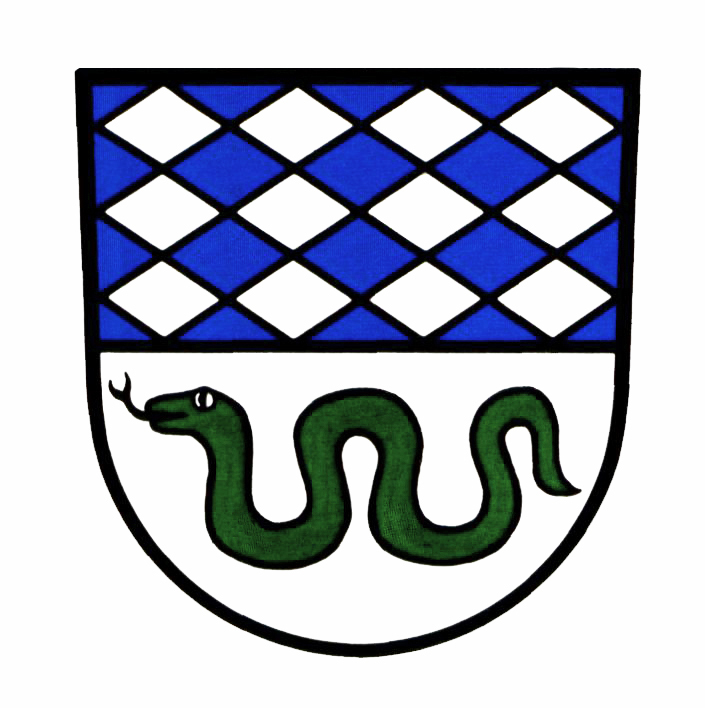
-
The Pioneer
In 1964, Walter Rupp, whose main occupation is as a customs officer in Allschwil, receives instruction on a private basis from the Swiss canine expert Anna Auer on how to train guide dogs. Ms Auer herself has learned what she knows from Walter Hantke in Oftersheim in 1951. In 1970, Walter Rupp and his wife Rösli set up a private guide dog school in Allschwil – the first «Swiss School for Guide Dogs for the Blind».
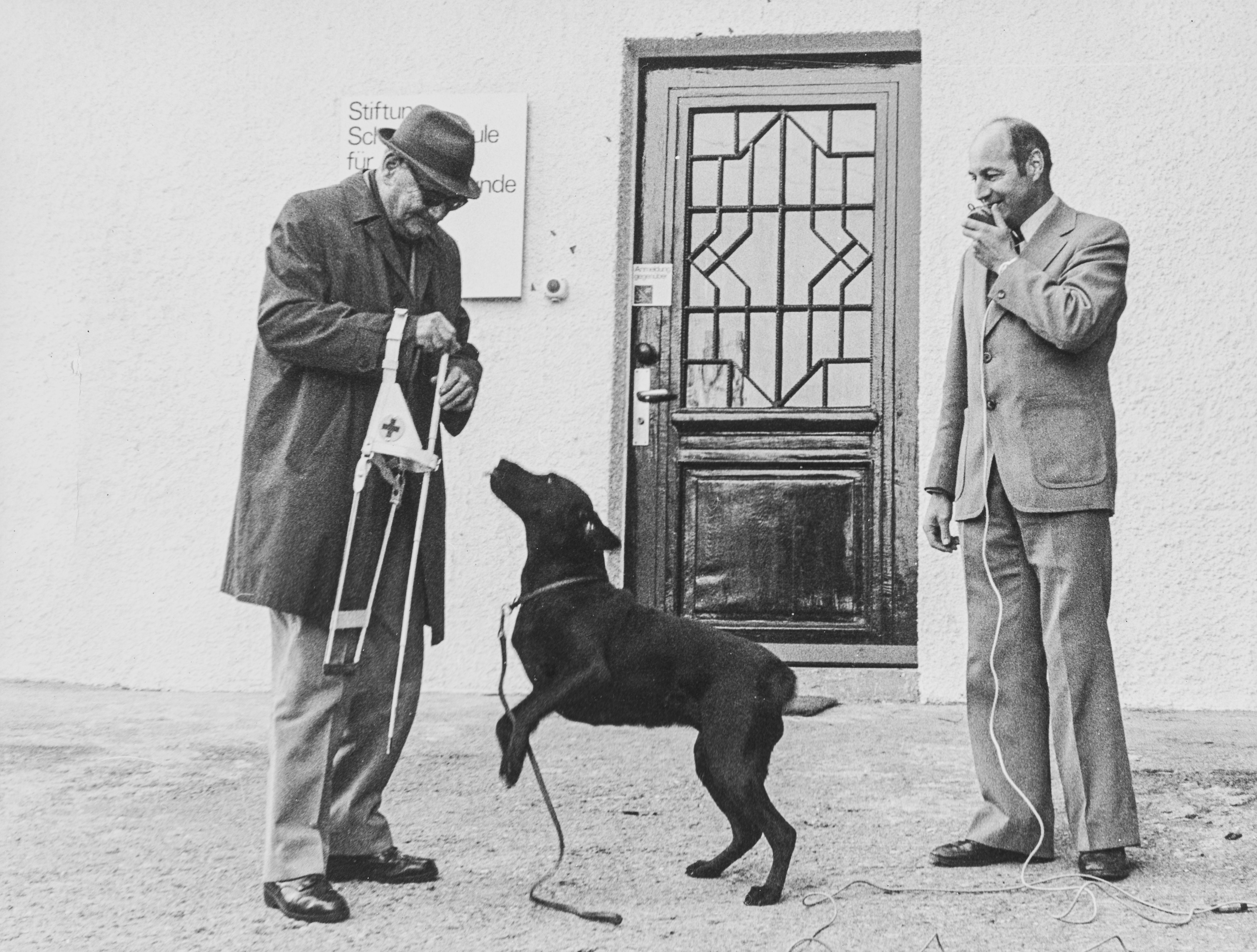
-
First trainee
Christine Rüedi arrives in the winter of 1969/1970 and is instructed by Walter Rupp on how to train guide dogs for blind people.
-
Setting up the Friends Association
The association for the «Friends of the Swiss School for Guide Dogs for the Blind» is set up in 1971. Thanks to generous donations from benefactors – such as Jeanne Lovioz – we are able to raise enough capital to establish the Foundation and buy the «Waldheim».
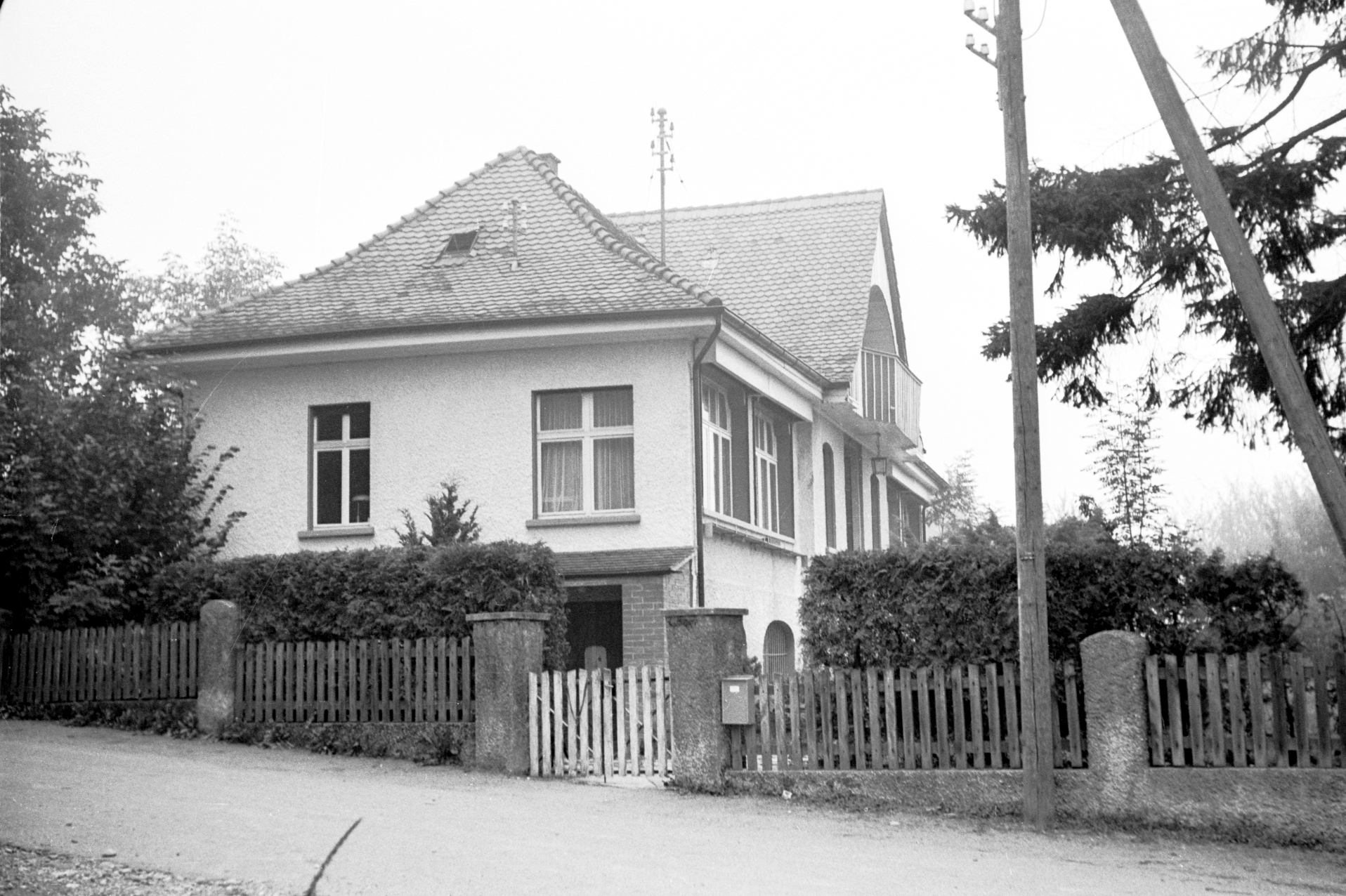
-
Establishing the Foundation
One year later, on 29th September 1972, Foundation Swiss School for Guide Dogs for the Blind is inaugurated. Walter Rupp and Christine Rüedi are employed on a regular basis from now on. The school is accommodated in the “Waldheim”, a former convalescent home outside Allschwil.
Soon, more employees have arrived - instructors Michel Babelay (left), Olivier Erb (second from the right) and in 1978 Raymond Ammann (2nd from the left). Rösli Rupp – not shown in the photo – takes care of the accounts.
-
First magazine
In January 1977 «Der Blindenführhund» [The Guide Dog for the Blind] magazine appears for the first time, in German and French. Ever since 1977, this publication has appeared twice a year; it also becomes available in Italian from October 2001.
-
Building the first kennel block
The demand for guide dogs from Allschwil is growing. The work on the building of new kennels to house about 30 dog crates begins in 1977. This new block – which includes a training paddock – is inaugurated in September 1978.
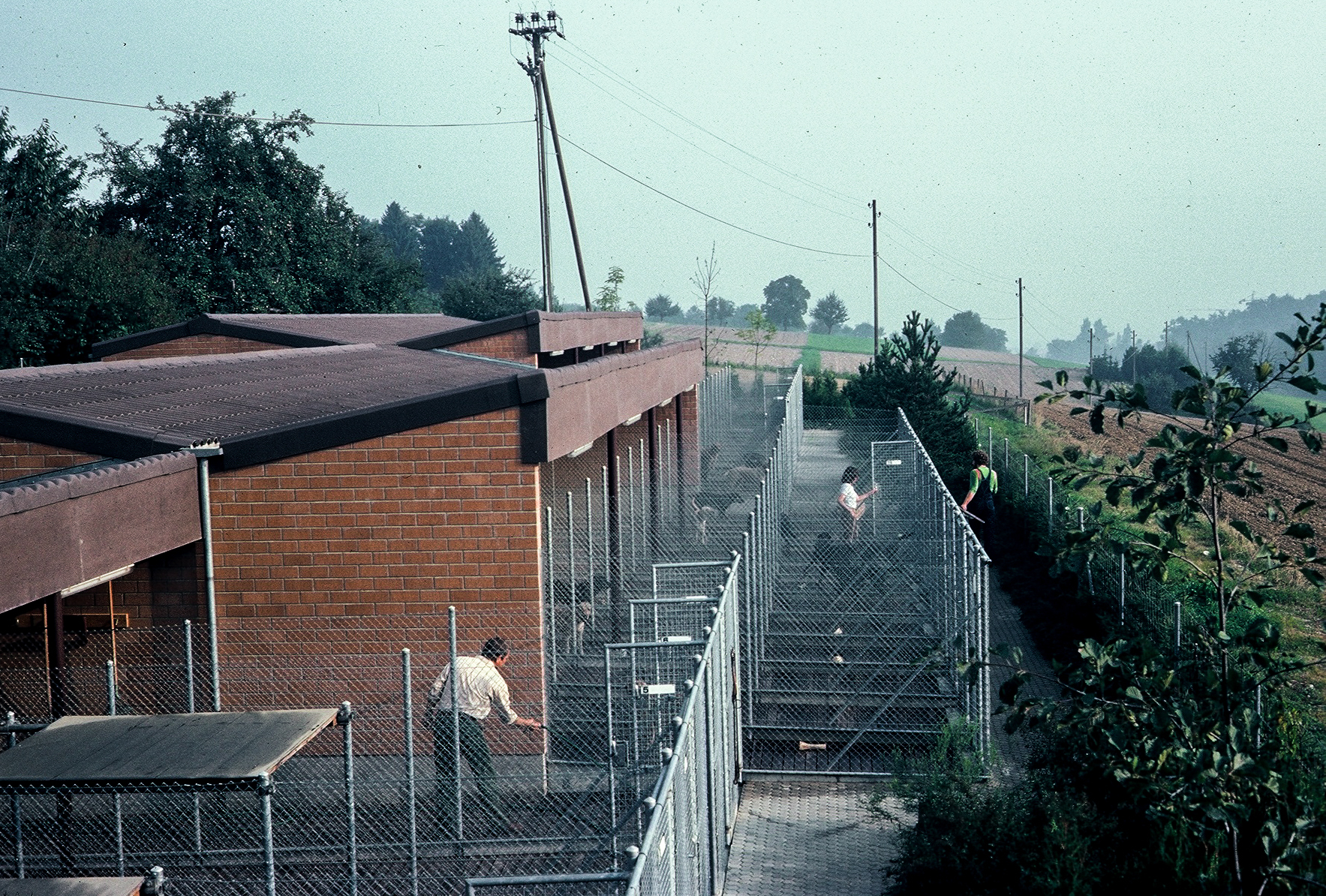
-
Developing a guiding harness
At the end of the 1970s, the school develops a new guiding harness, in close collaboration with the de cuir atelier in the Jura. The new fit and cushioning prevents pressure sores on the dog. This harness is the first to feature the school’s logo.
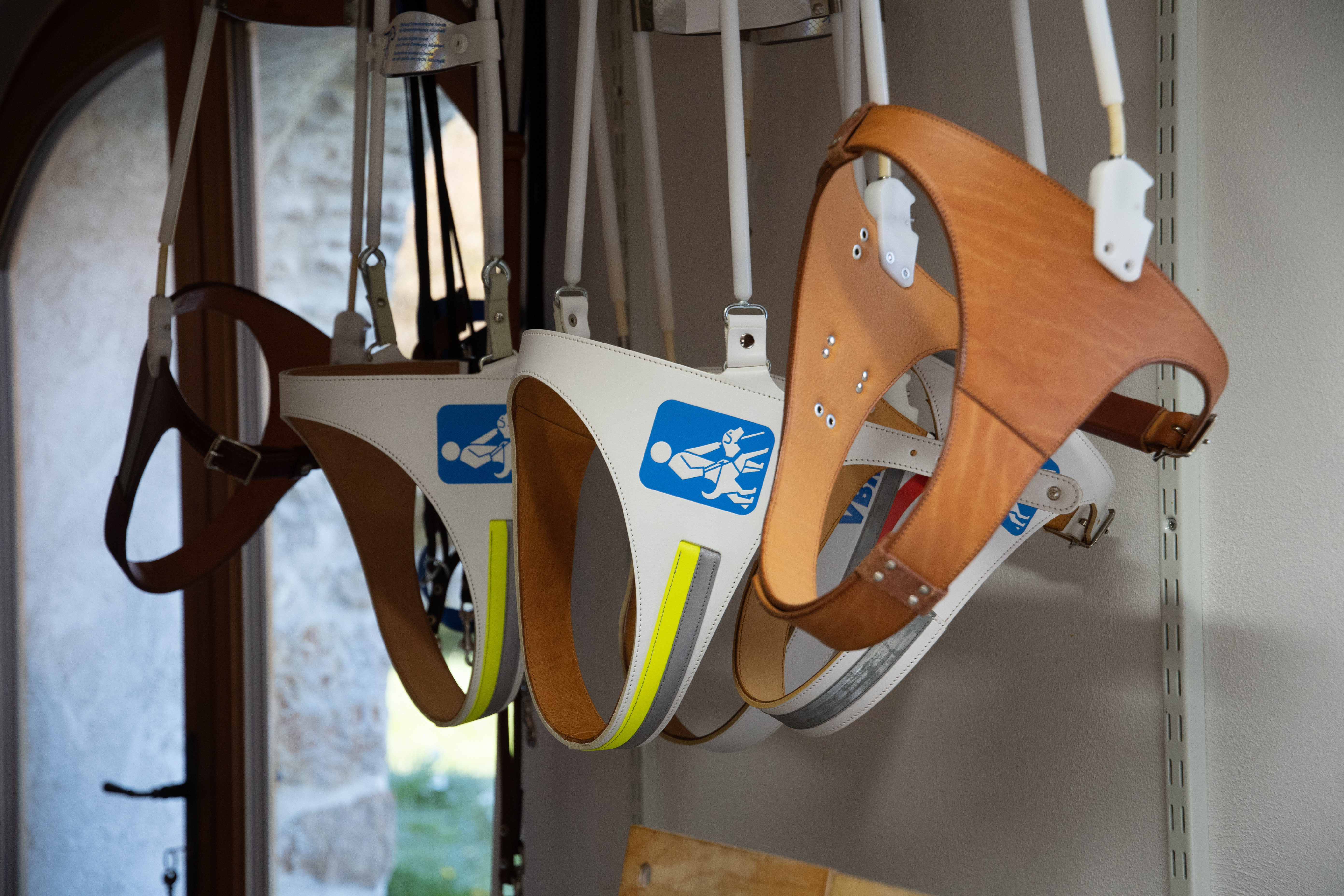
-
Disability insurance finance
In the early 1970s, the disability insurance scheme still restricts the cost credit allowed for the funding of guide dogs for the blind; it can only be paid to people who are in paid employment, and this gives rise to protests from housewives. The provision of guide dogs to people who are not in paid employment (because a dog could help them make or retain contact with their environment) only gains traction towards the end of the decade.
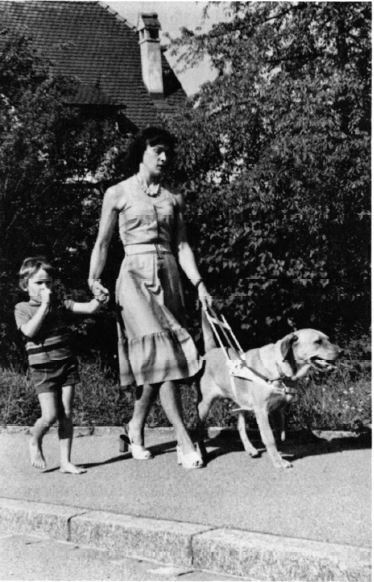
-
Standard work
In 1984, Walter Rupp publishes his booklet entitled «Hundeerziehung einmal anders!» («Dog training done differently! »). This is aimed at private dog owners, but it also works as a book of first principles for people taking in foster dogs. In 1987, this is followed by «Der Blindenhund» («A dog for blind people»), published by Albert Müller, which becomes the standard work for people learning to train guide dogs for blind people for many years to come.
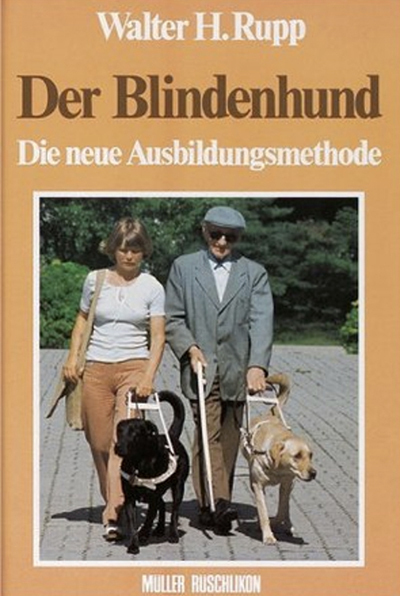
-
Battle for access rights
A battle takes place in the mid-1980s for guide dogs to gain the right to enter places where dogs are generally prohibited, e.g., shops, restaurants and offices. People who depend on guide dogs from Allschwil also joined the demonstrations – as shown in this photo, with banners in Basel’s Freie Strasse.
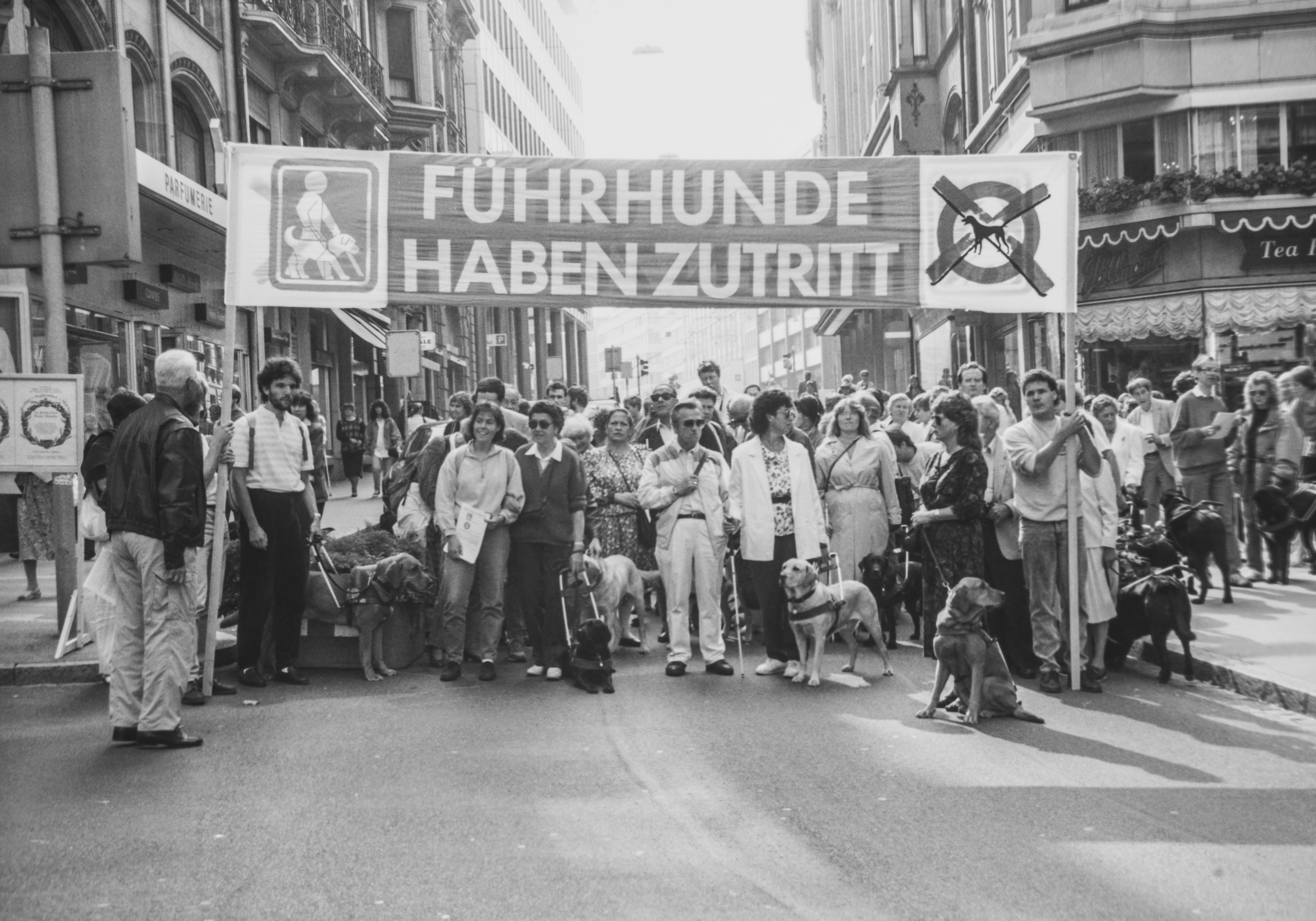
-
Renovating the kennel block
Construction defects make it necessary to completely renovate the kennel block. The school uses this opportunity to set up new communal crates, allowing the dogs to be accommodated in a more appropriate way for their species.
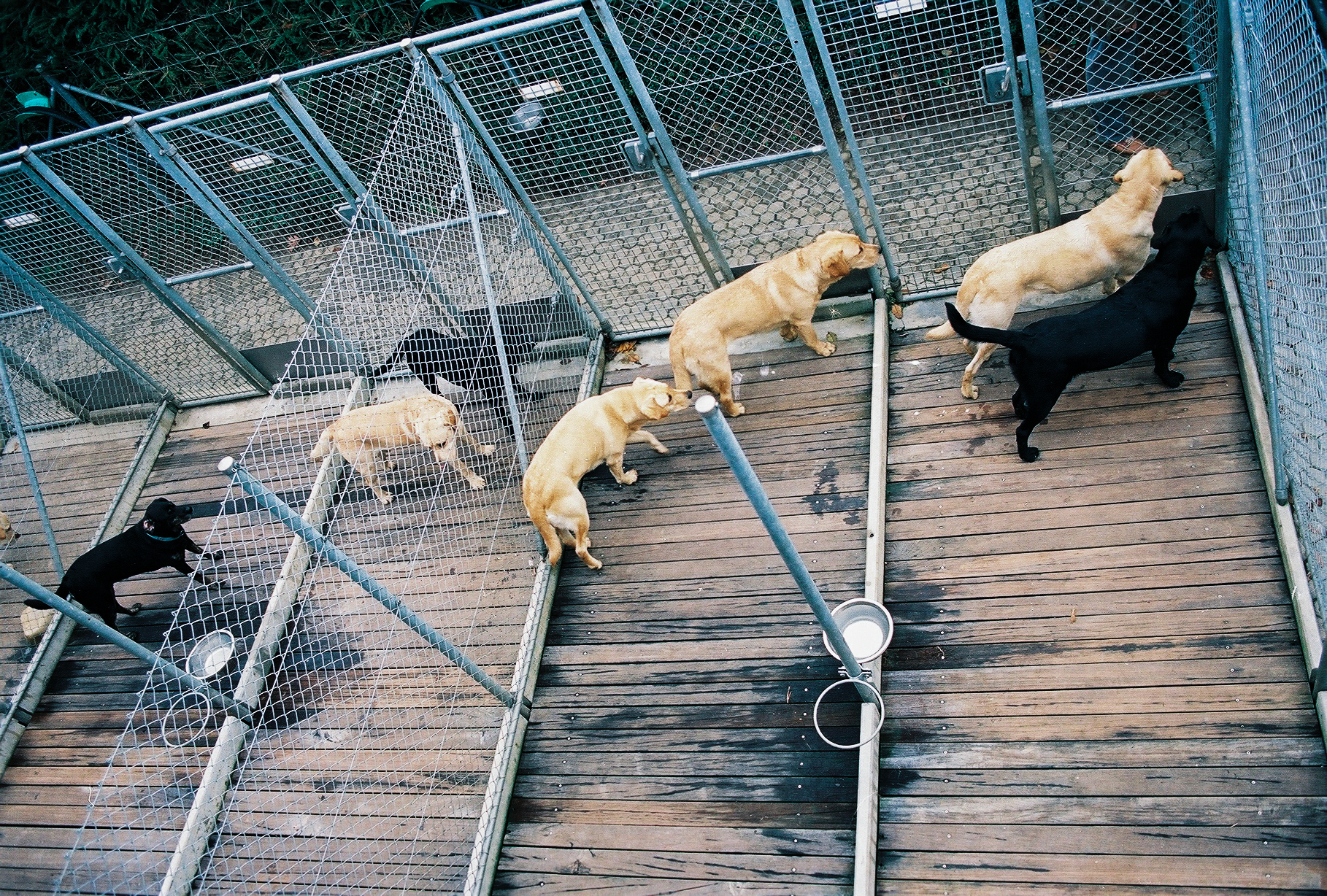
-
First reorganisation
The reorganisation undertaken in 1996 creates three specialist areas within the school, each led by a member of the Management Board. These areas are: Training; Breeding; and Administration and Public Relations. This reorganisation of the school leads to a surge of professionalisation in many areas.
Nr. 41 "Der Blindenführhund" Jahresbericht 1996 Mai 1997
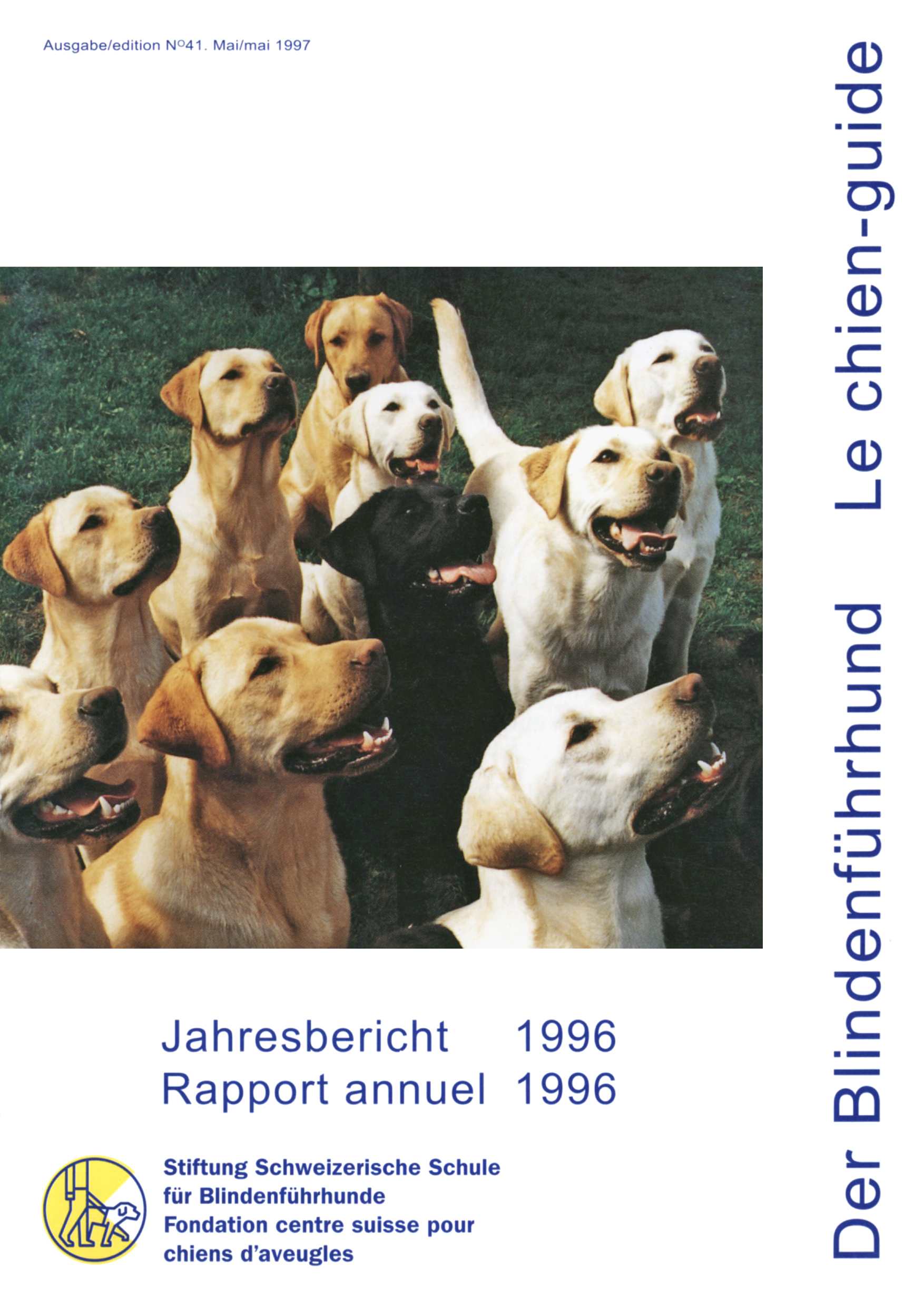
-
Documentary on Swiss TV
On 9th October 1997, Kurt Gloor’s documentary film «Piloten für die Dunkelheit» («Pilots of the Darkness») is broadcast on Swiss television. This is a portrait of five visually impaired people and their guide dogs from Allschwil. SRF Media Relations write that: «It takes at least six months of intensive, patient training before a dog can be entrusted to a blind person. How are blundering Labrador puppies transformed into reliable guide dogs? How are the dogs selected and trained? Our filming team delves into these questions when they visit the Foundation Swiss School for Guide Dogs for the Blind in Allschwil. This school is regarded as one of the best guide dog schools in Europe for the breeding and training of Labrador-Retriever dogs. The filming team watches trainers as they carry out their day-to-day work».
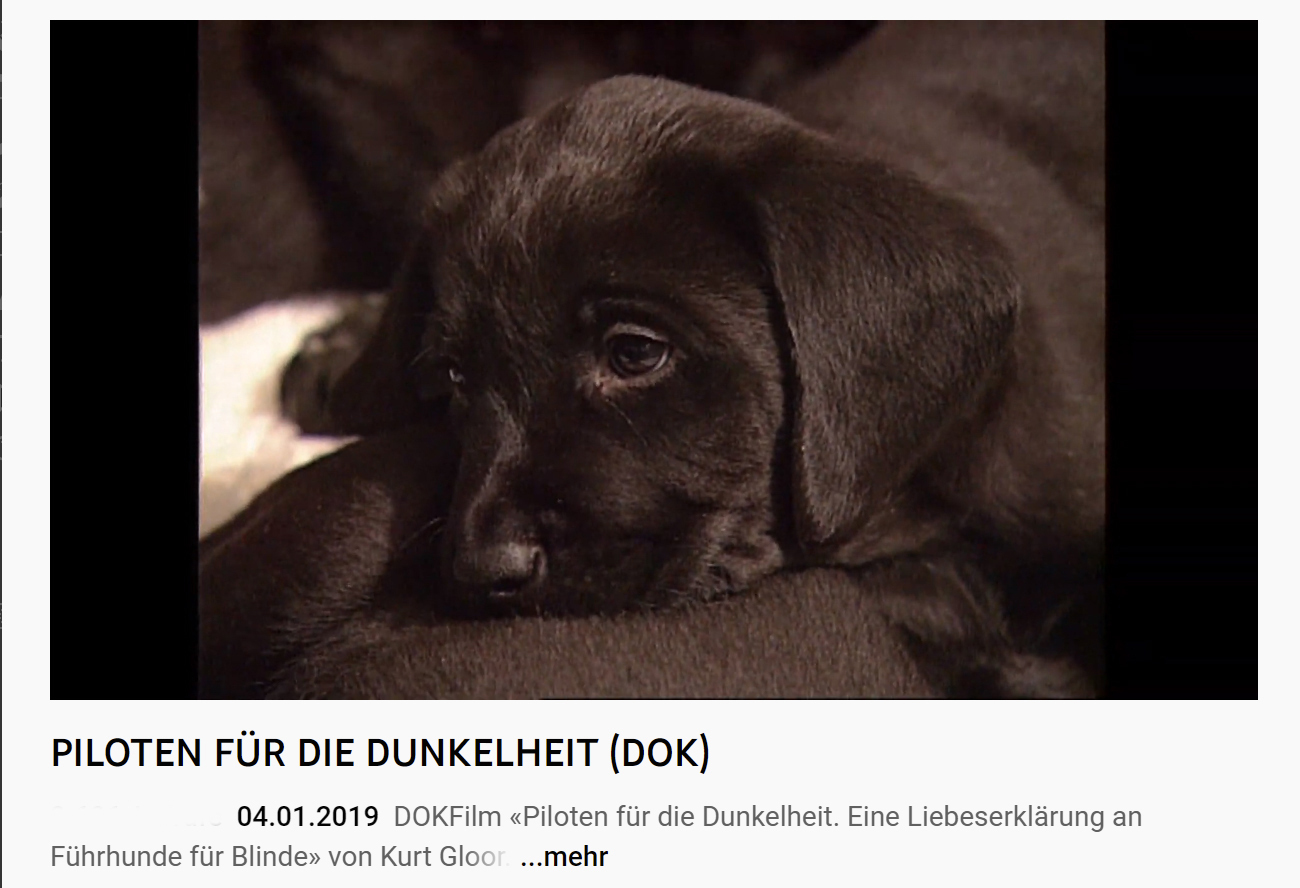
-
The arrival of animal behaviour research
The collaboration with animal behaviour researchers Heinz Weidt and Dina Berlowitz that begins at the end of the 1990s leads to wide-ranging changes. The school works out a new concept for the rearing of its puppies, diversifies the programme used to train foster families and adapts the dog care and training methods used for guide dogs.
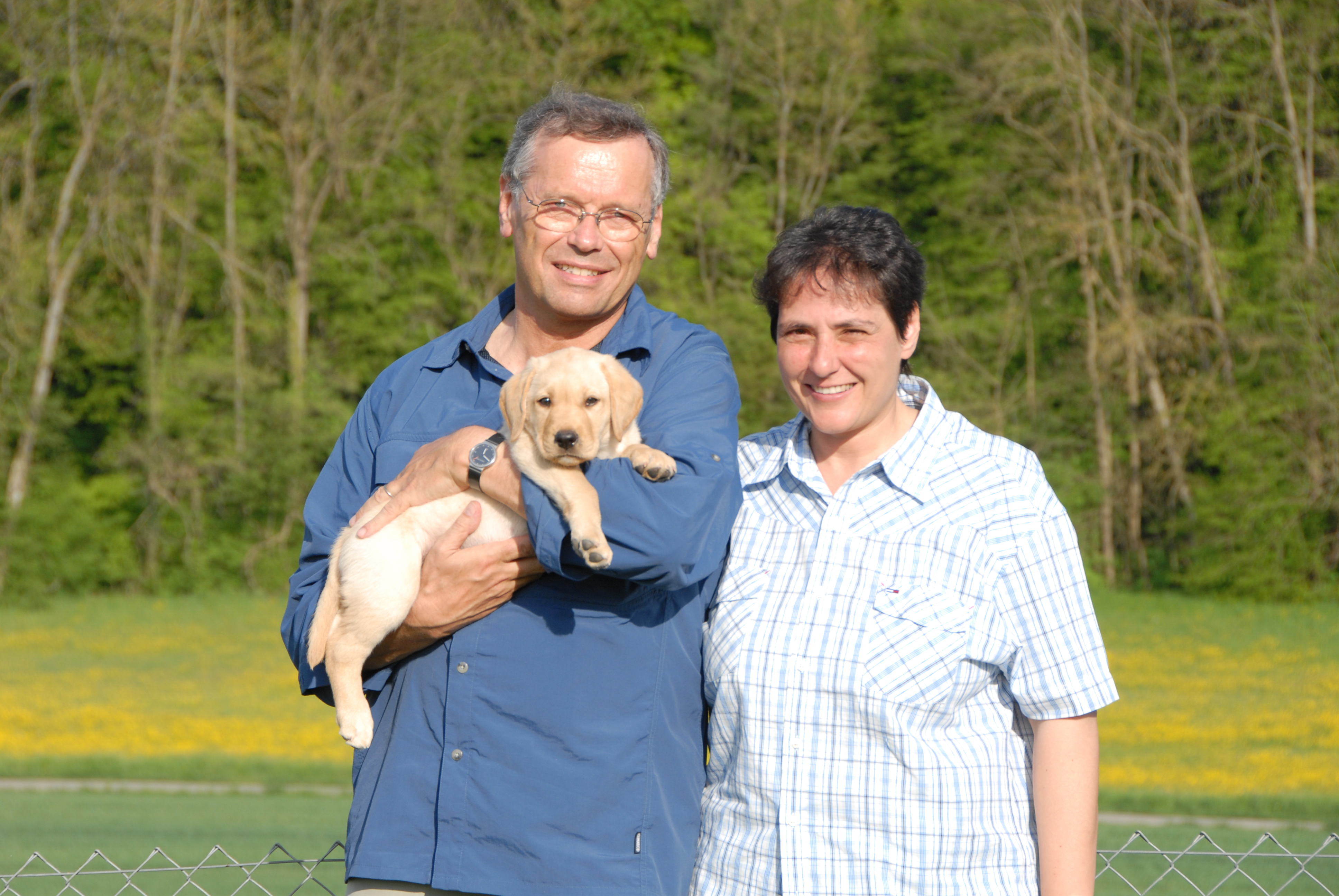
-
Mitgliedschaft IGDF
Am 1. Januar 1999 wurde die Allschwiler Blindenführhundeschule Mitglied der internationalen Föderation der Blindenführhundeschulen (International Guide Dog Federation - IGDF). Heute umfasst die IGDF über 95 Mitgliederorganisationen in 34 Ländern, die sich für einheitliche Qualitätsstandards im Bereich Zucht, Ausbildung, Einführung und Begleitung von Führhunden bei blinden oder sehbeeinträchtigen Menschen engagieren. IGDF-Mitglieder werden regelmässig im 5-Jahresrhythmus durch unabhängige Experten überprüft.

-
Reconstruction
2000-2002: Several years of planning have taken place in advance of the ground-breaking ceremony. In essence, the aim of these new premises is not just to provide appropriate accommodation for the dogs – they also have to pay proper attention to the ecological realities. The new building blends well into an environment dominated by forests and fields. Our premises are made up of two wings; while one contains spaces for training, dog care and breeding purposes, the other houses offices, seminar rooms, a film screening room, a cafeteria and residential accommodation. All of the buildings are accessible through a central space. The latest findings from animal behaviour research are included in the design concepts of the crates and the breeding programme. These premises are heated by wood chips, while an additional photovoltaic system has also been supplying heat and energy since 2012. The roof surfaces are used to collect water. Even though the school now employs a workforce of over 50 people, the system has proved its value so far.
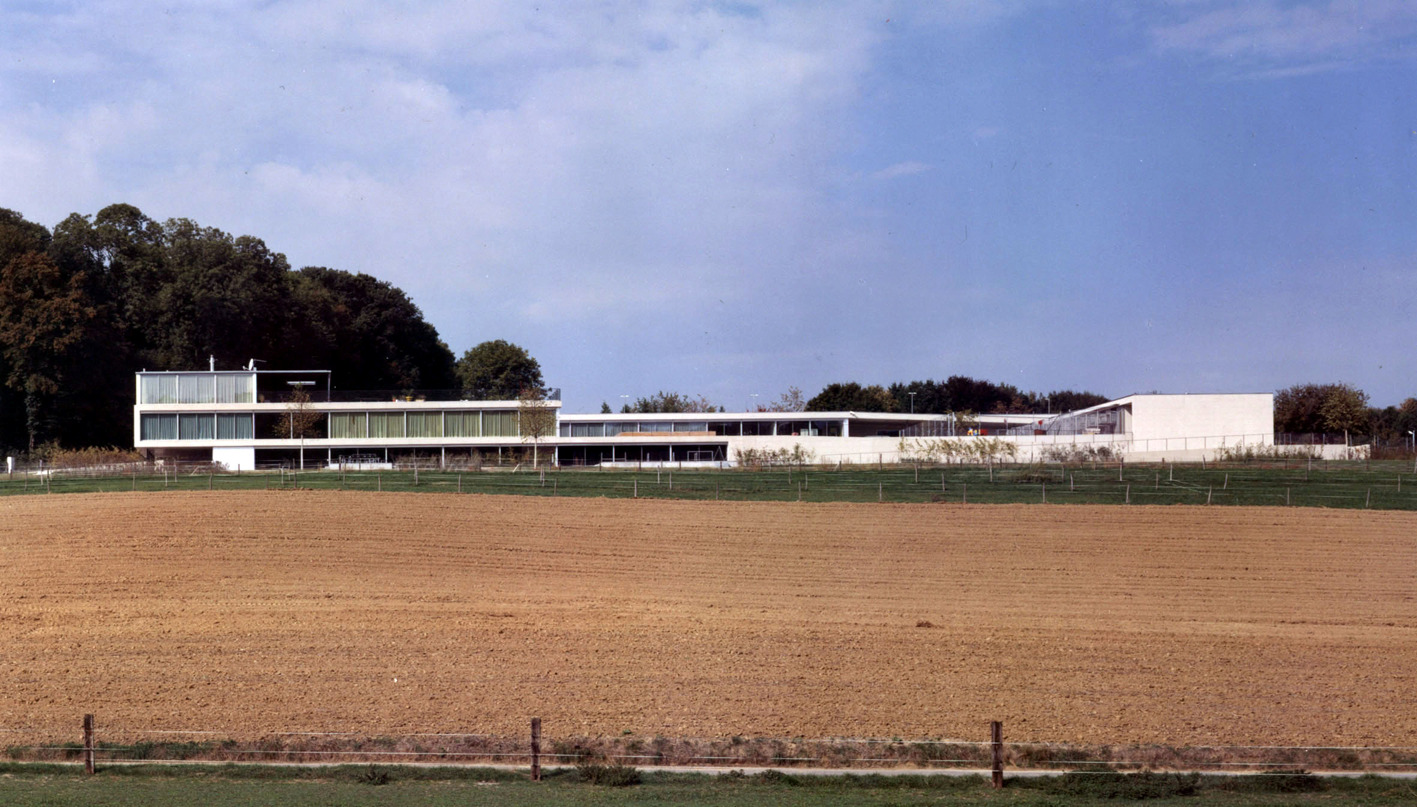
-
Social support dogs on the starting line
The Social Support Dogs division begins with a pilot project and initial courses in the Cantons of Basel, Bern and Valais. Initiator Jacques Ditesheim is inspired by the idea that dogs that prove unsuitable for work as a guide dog can be trained to carry out social assignments in institutions such as retirement homes and schools providing education for children with special needs. Visits from the social support dog teams aim to add pleasure and variety to the residents’ day-to-day routine
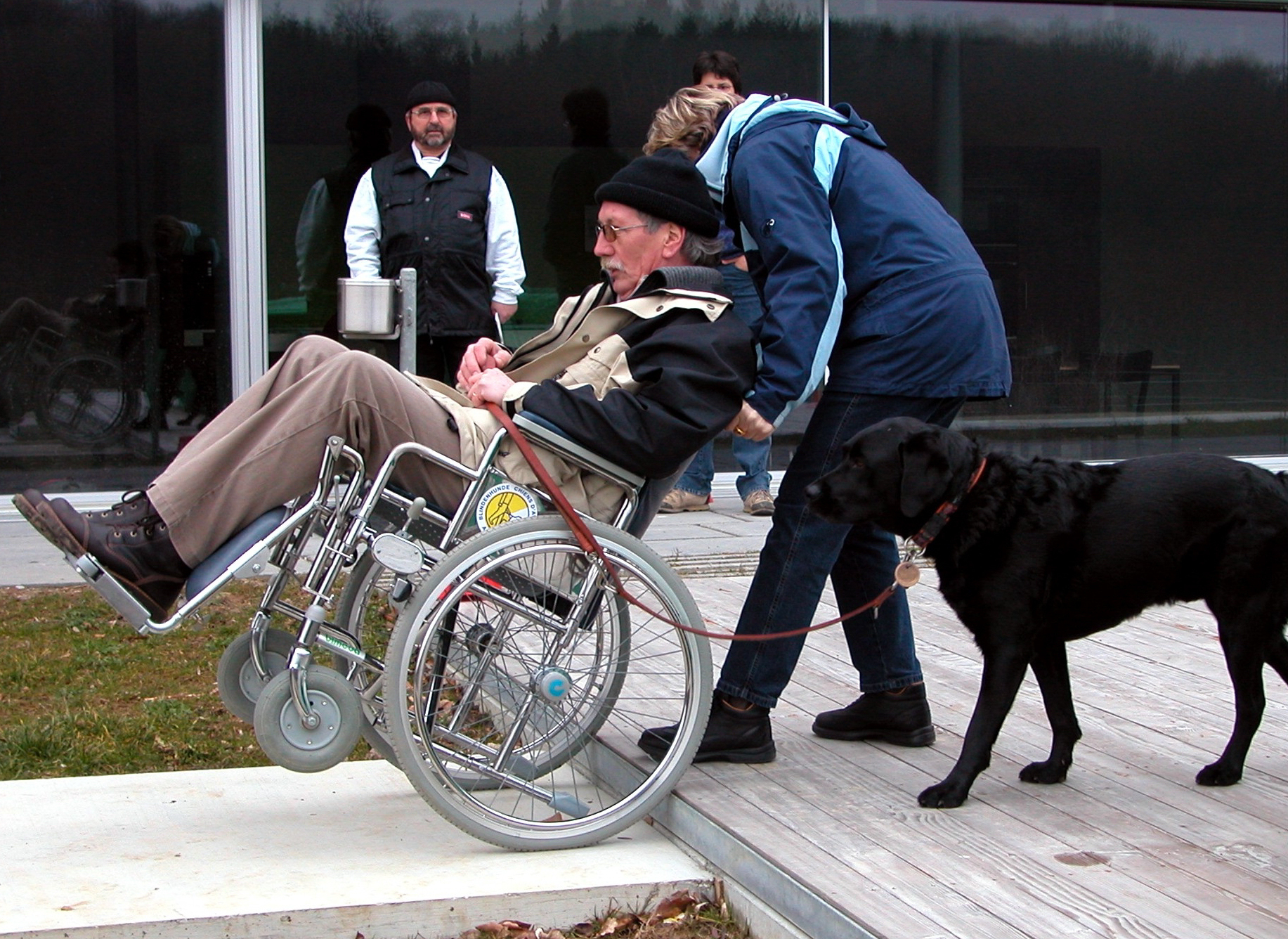
-
Assistance dogs
Natalie Corman has already been training dogs to support people with restricted mobility within the framework of the FIDES association for assistance dogs. Our school takes over patronage of the association in 2009 and provides Natalie Corman with her first dog for training purposes. The new division for assistance dogs develops out of this pilot; it begins official operations in 2012 and has been a member of the International Association of Assistance Dogs since 2014.
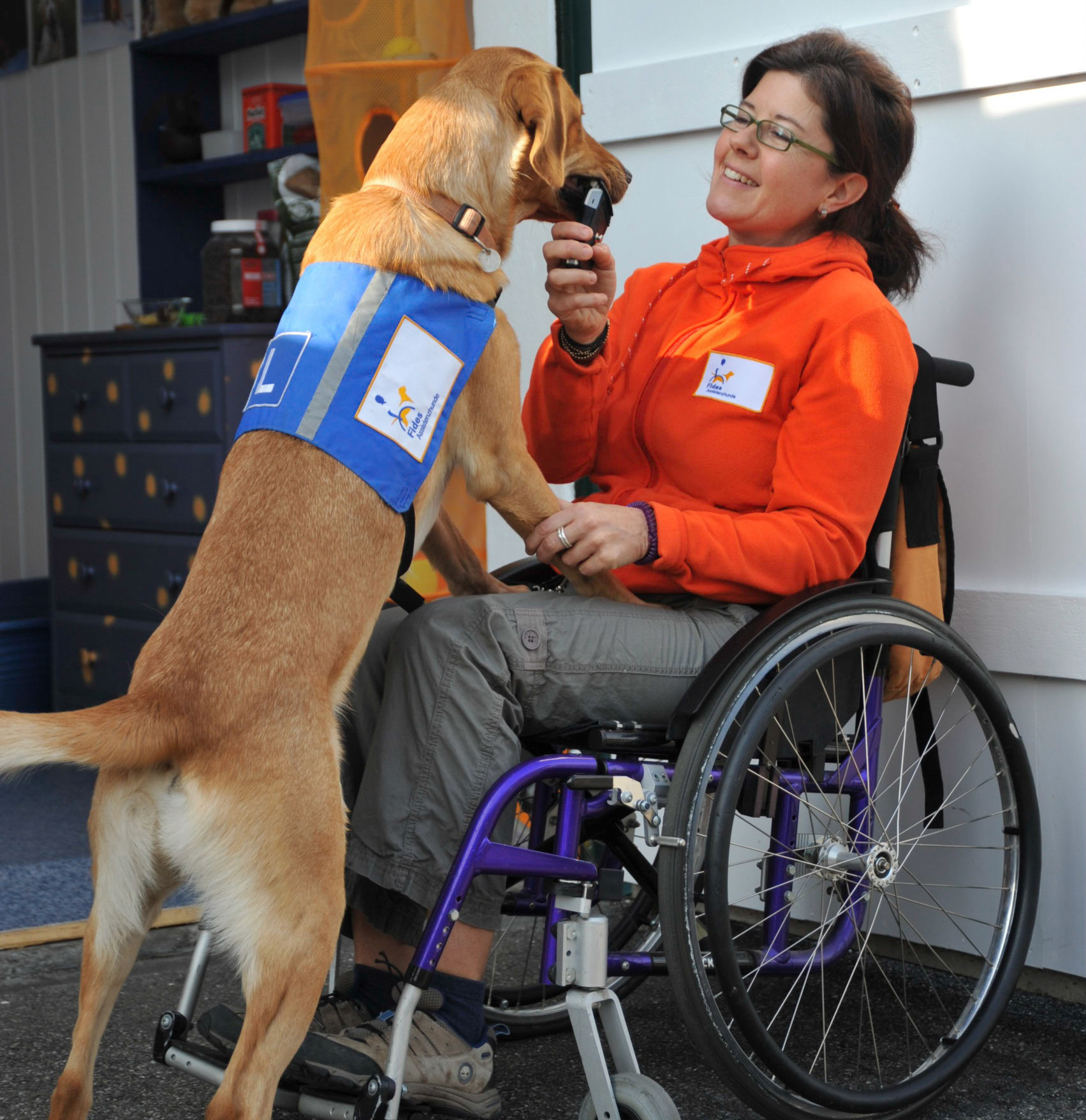
-
Autism service dogs
The next pilot project begins in 2010, this time in connection with autism service dogs. Guide Dogs for the Blind instructor Peter Kaufmann has brought the idea to Switzerland and developed a course for support dogs to help children aged between 4 and 10 that have been diagnosed with autism.
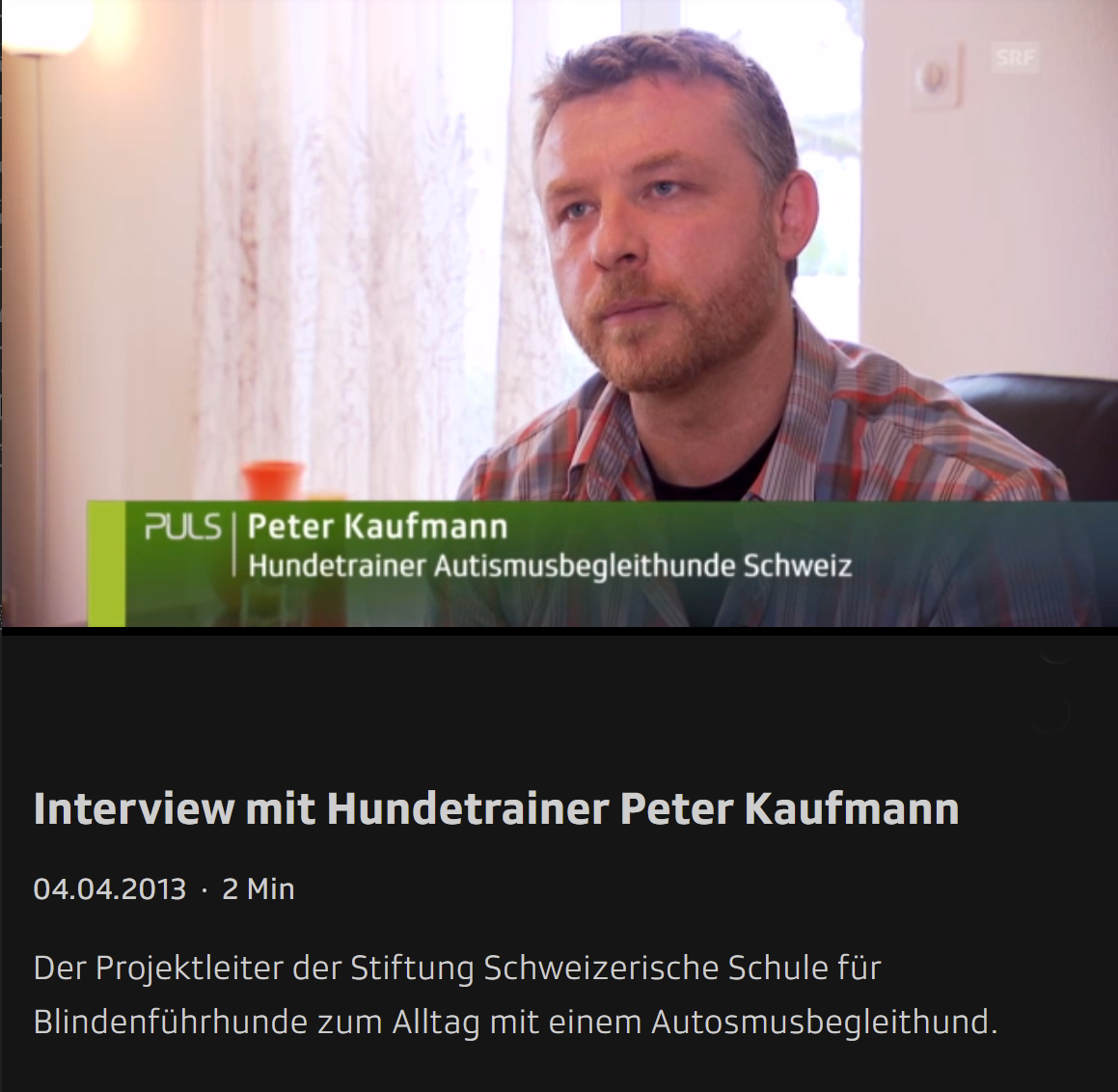
-
Advanced specialist training
Professionalisation of the training area starts in the «noughties», with the development of a framework teaching plan, job descriptions and examination regulations. On 10th May 2010, the Swiss State Secretariat for Education, Research and Innovation recognises the training course for instructors of guide dogs for blind people (including the existing diploma) as an advanced professional qualification with a Swiss Federal diploma.
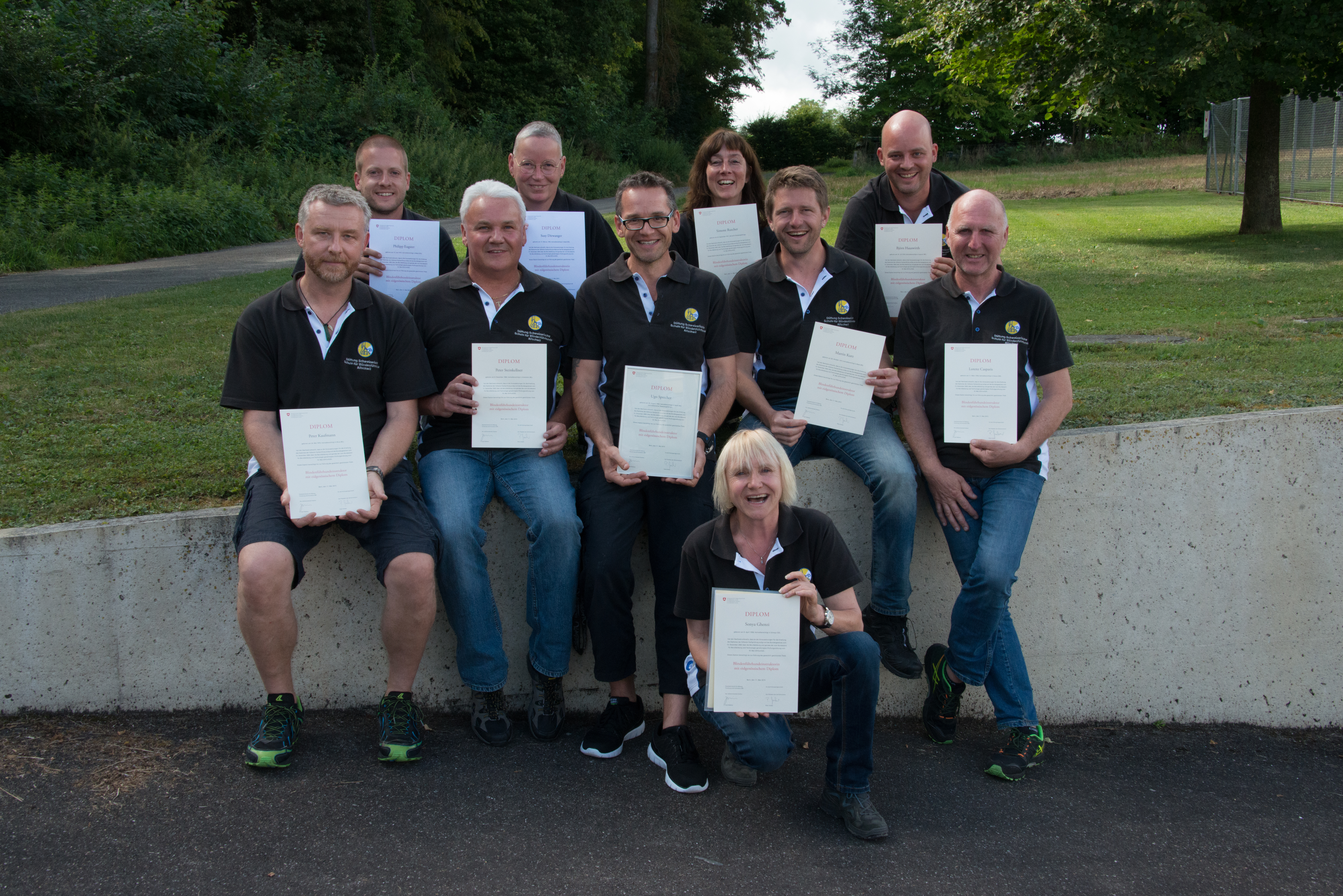
-
German foundation
The Allschwil school sets up the German Foundation of the Swiss School for Guide Dogs for the Blind on 5th January 2012, with the aim of gaining a foothold in the German market and providing better support for partner schools, such as the one in Berlin.
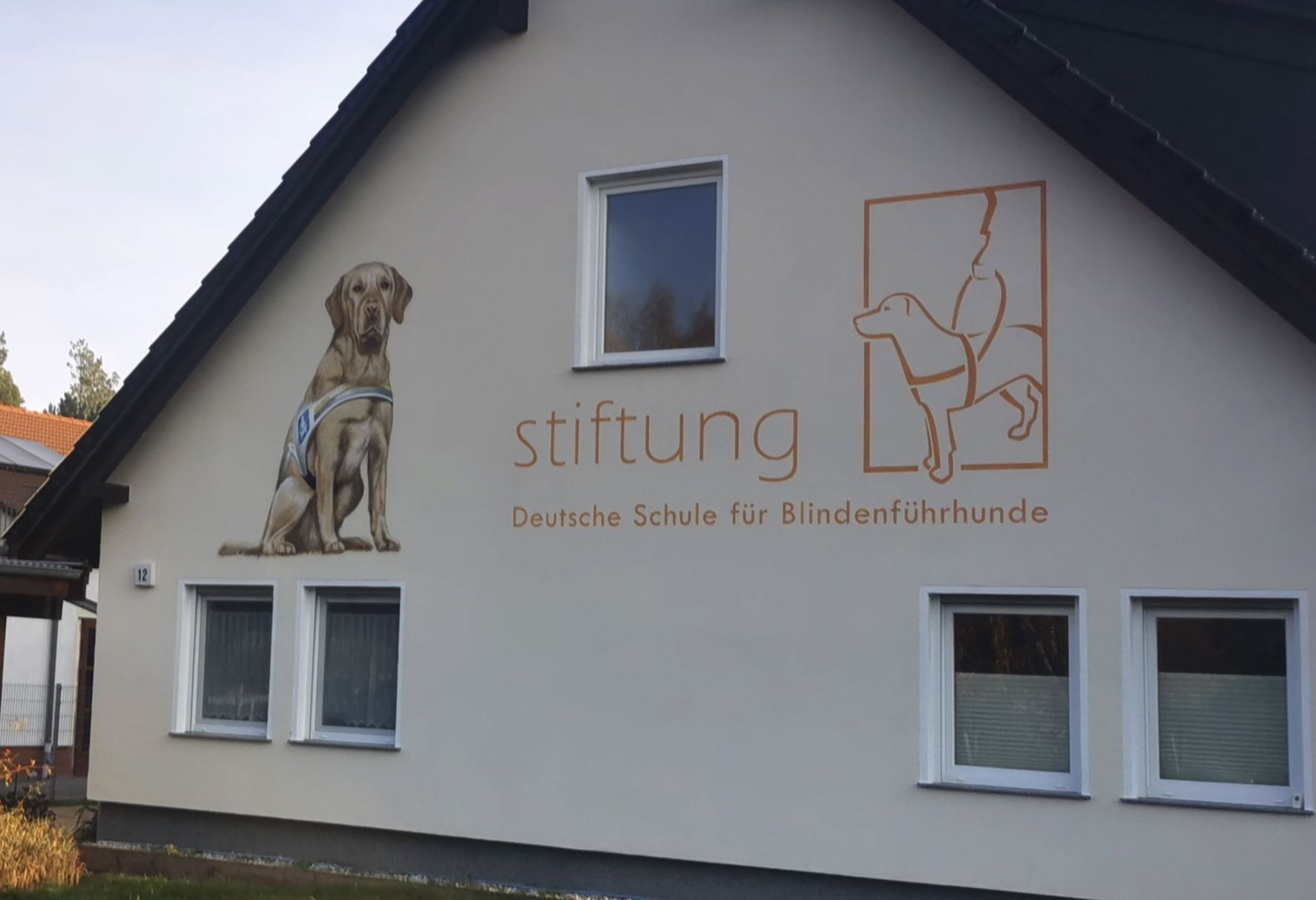
-
Part-funding of Assistance dogs by the disability insurance scheme
The disability insurance scheme pays a one-off financial settlement of CHF 15,500 to the Foundation for the provision of Assistance dogs to people who receive an allowance for a medium to severe level of incapacity. From 1st July 2020, the disability insurance scheme extends this financial settlement to people who receive an allowance for a minor level of incapacity.
Verordnung über die Abgabe von Hilfsmitteln durch die Invalidenversicherung (German only)
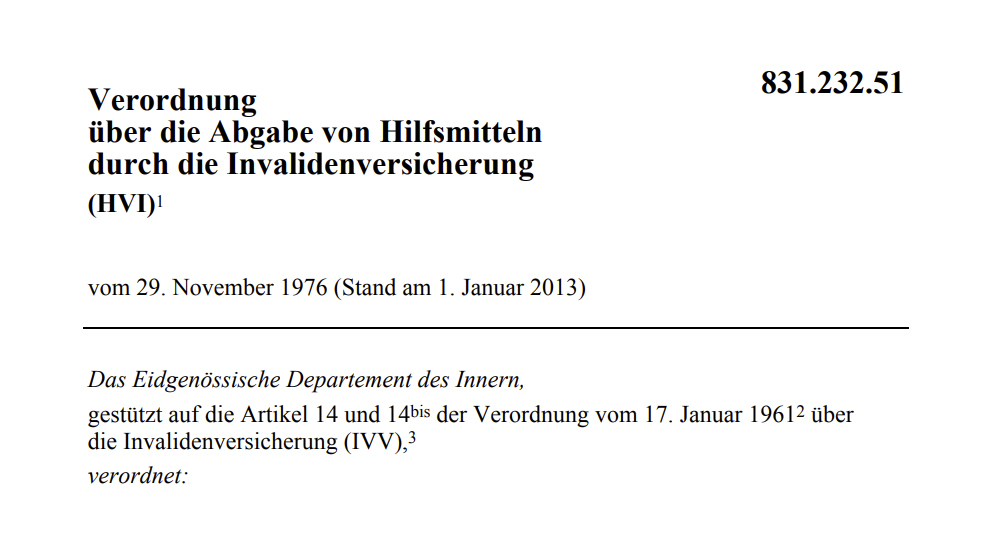
-
Mitgliedschaft ADI
Im Zuge der Schaffung der neuen Sparte Assistenzhunde beantragte die Blindenführhundeschule auch die Mitgliedschaft bei Assistance Dogs International, einer weltweiten Non-Profit-Koalition von Schulen und Programmen, welche Assistenzhunde ausbilden. Seit Januar 2014 ist die Allschwiler Blindenführhundeschule ein akkreditiertes Mitglied von Assistance Dogs Europe – Assistance Dogs International (ADEu/ADI) und wird ebenso im 5-Jahresrhythmus durch ADI-Experten überprüft. ADI hat aktuell 135 akkreditierte Mitglieder in 23 Ländern.
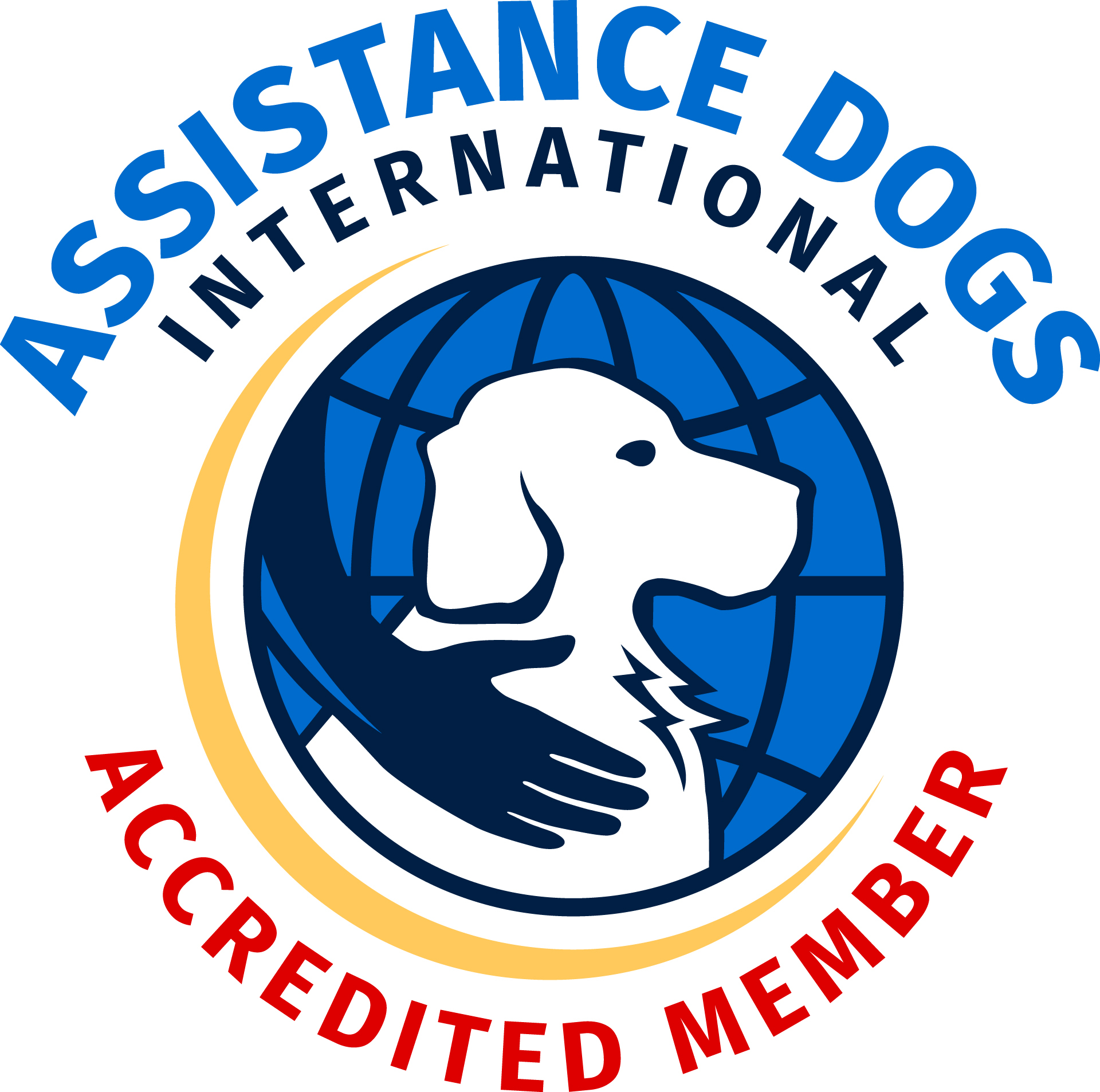
-
Adjusting the purpose of the foundation
In 2017, following extended negotiations with Switzerland’s Federal Supervisory Authority for Foundations, the school is finally able to adjust the F«oundation’s article of purpose to match its new circumstances. The four divisions – guide dogs for blind people, social support dogs, assistance dogs and autism service dogs – will henceforth be regarded as an integral part of the school.
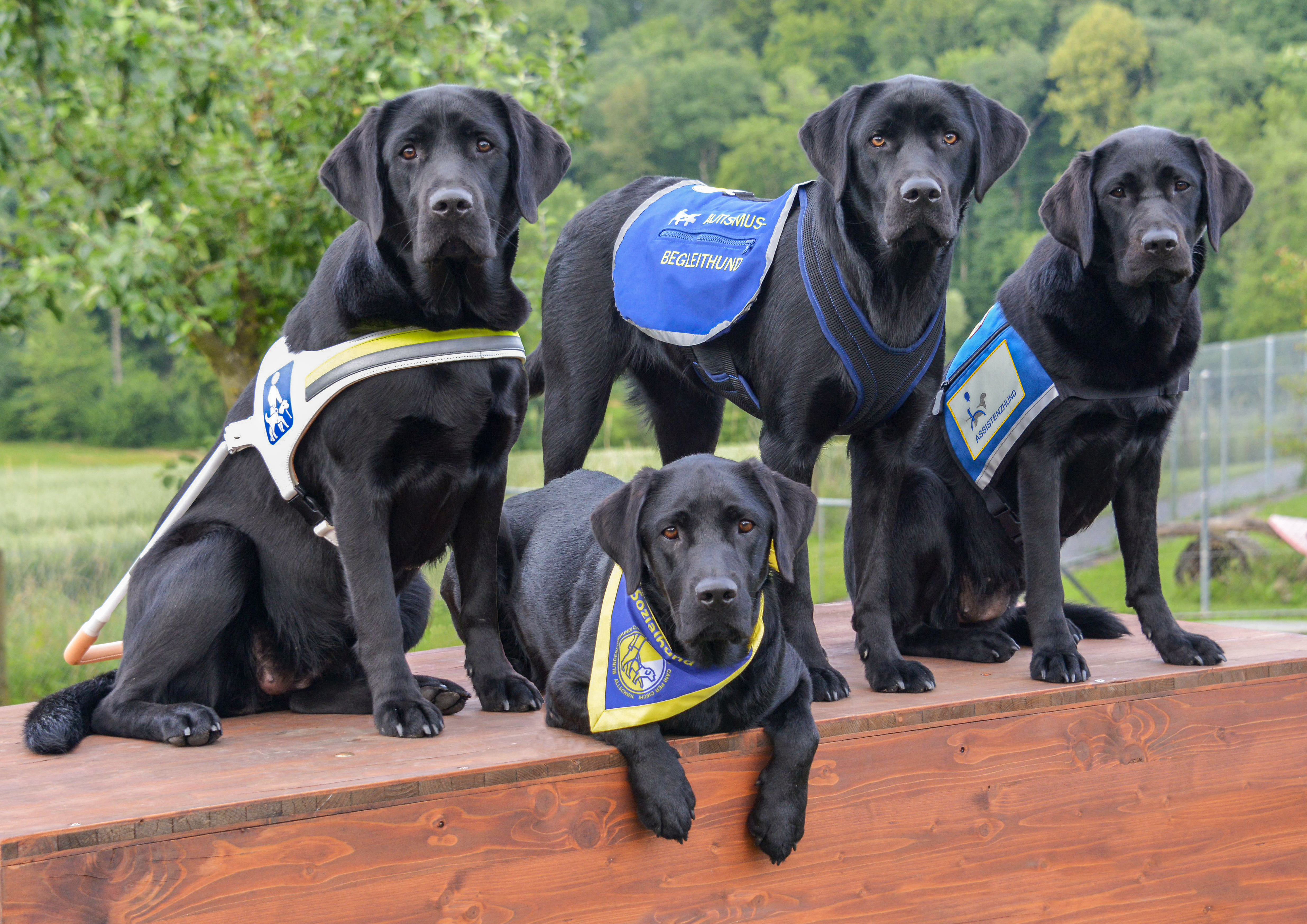
-
Winding up the German foundation
From 2018: In view of the new strategy, aimed at focussing on Switzerland and building up the additional training divisions, we close down the German foundation and reduce the school’s participation in the German market on a step-by-step basis.
-
«Brava» – the new magazine
The Bulletin appears in a new form in October 2018. The name of this magazine is now «Brava», in honour of the voice command we use to praise the dogs at Allschwil.
In that same year, we also refresh our entire public image, with a re-design of our logo and advertising materials.
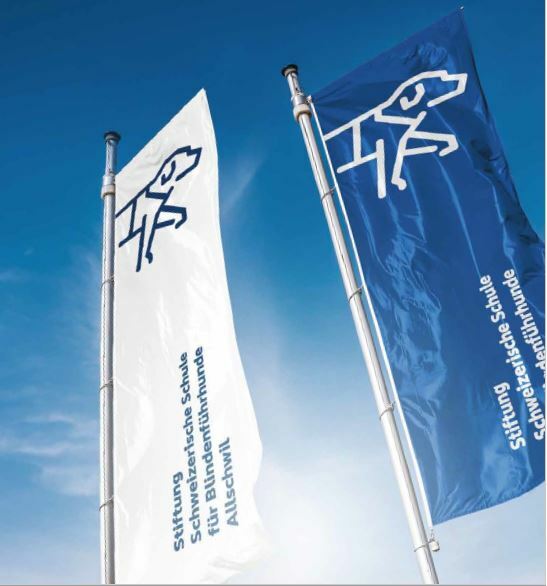
-
Second reorganisation
The school’s second reorganisation creates a joint business management structure. This structure is augmented by a skilled senior management team, which also participates in the work of the different teams.
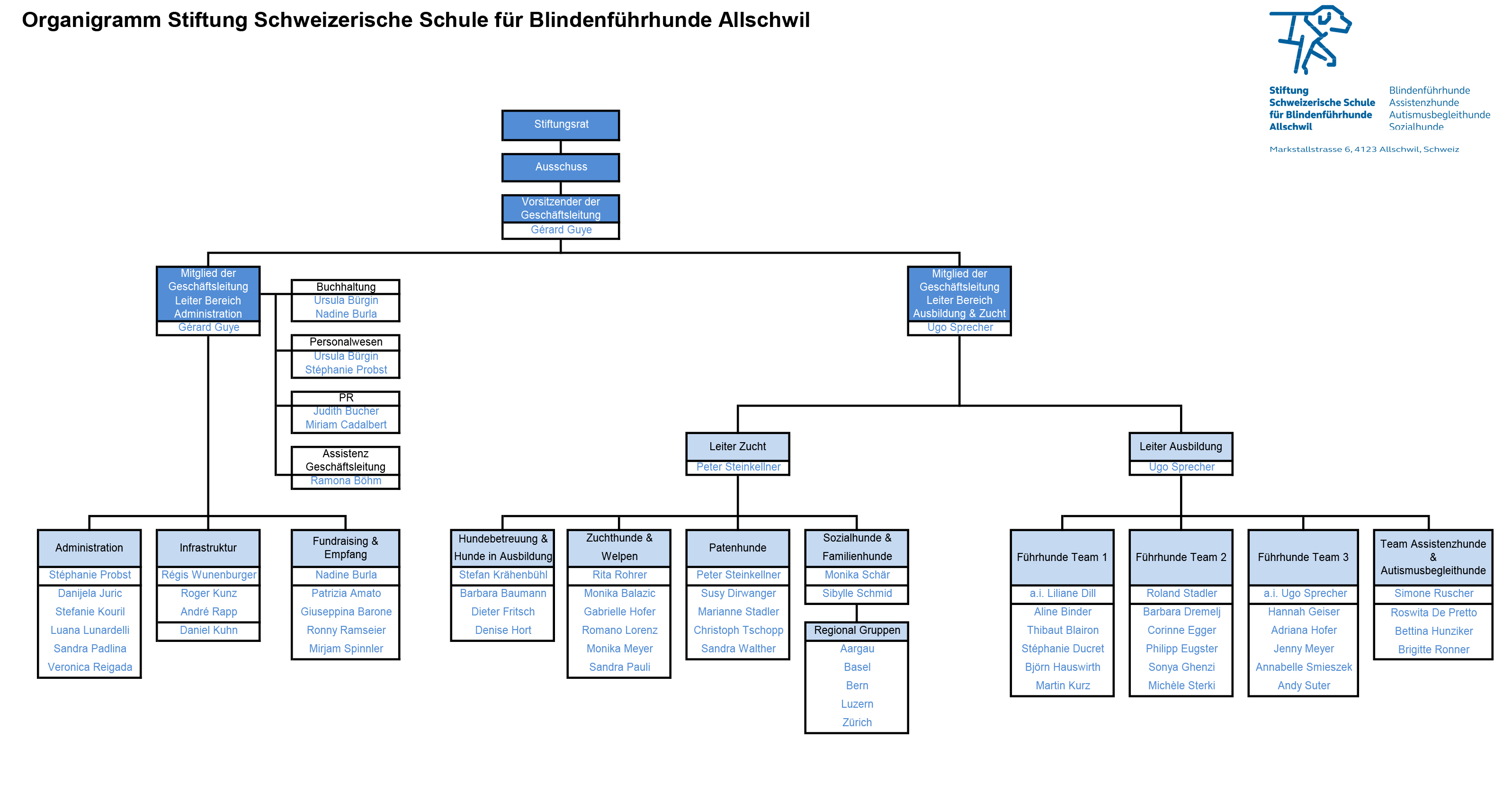
-
50 Years in Figures
50 years after it is first established, the school now employs 54 members of staff. Over 2450 puppies have been born in Allschwil since 1972, and we have successfully trained and assigned 1023 guide dogs for blind people, 29 assistance dogs and 47 autism service dogs. In addition, 423 social support teams now undertake a variety of assignments.
